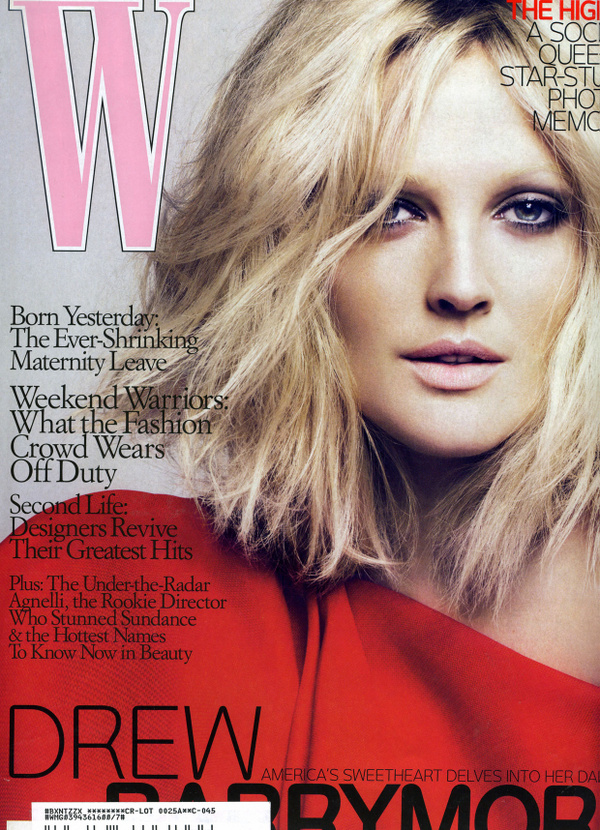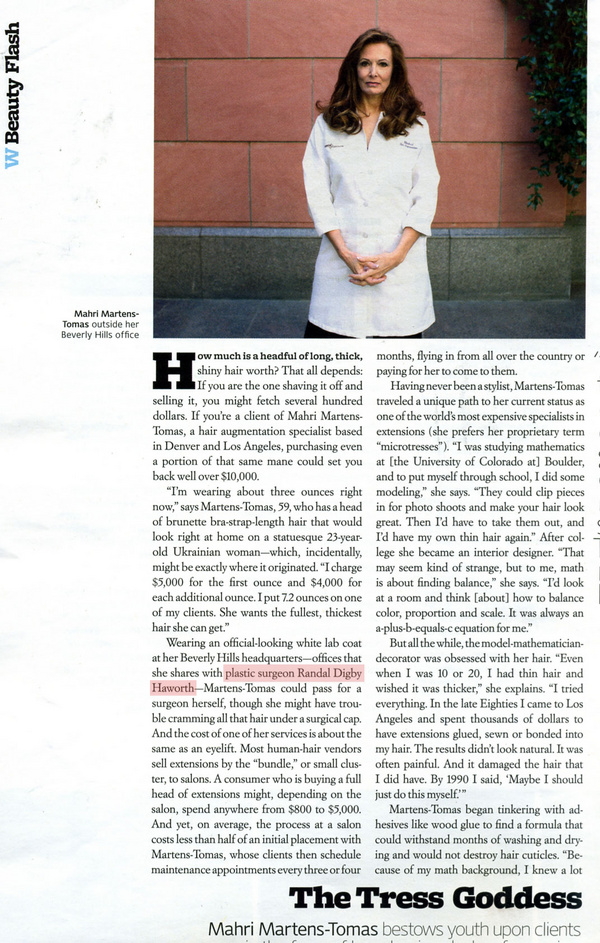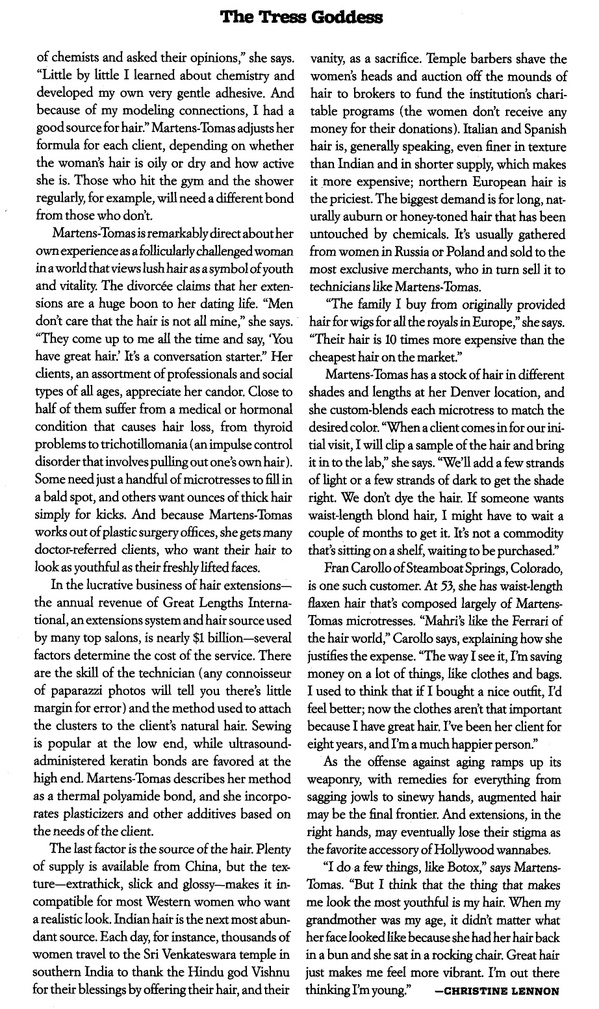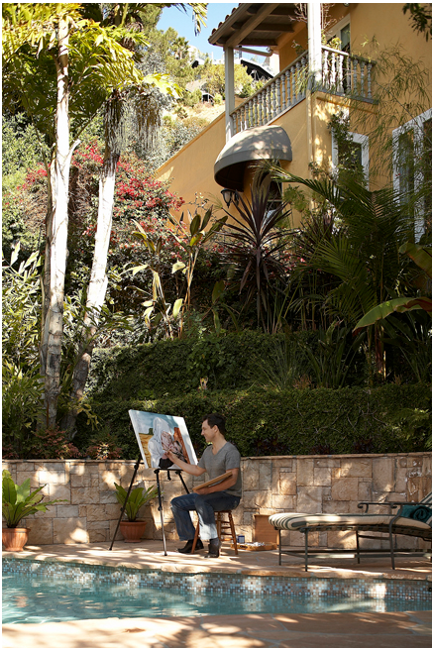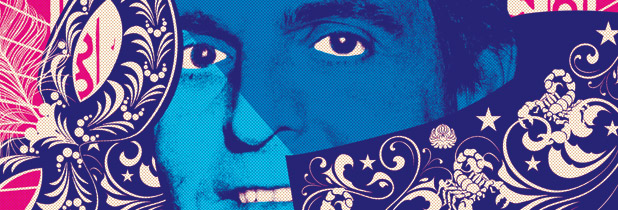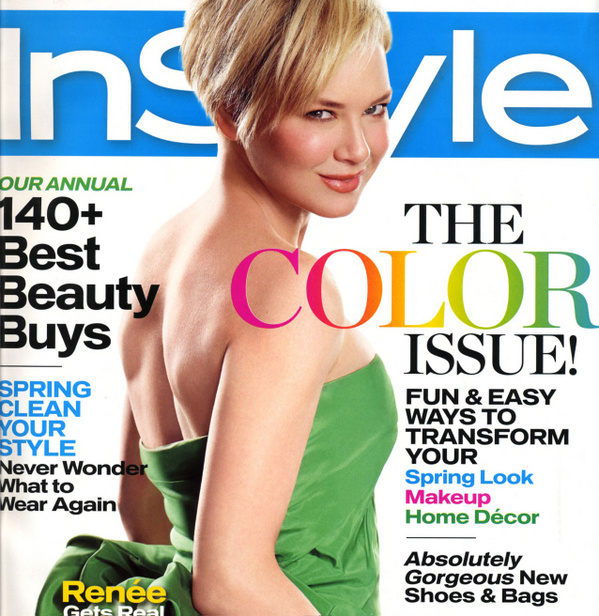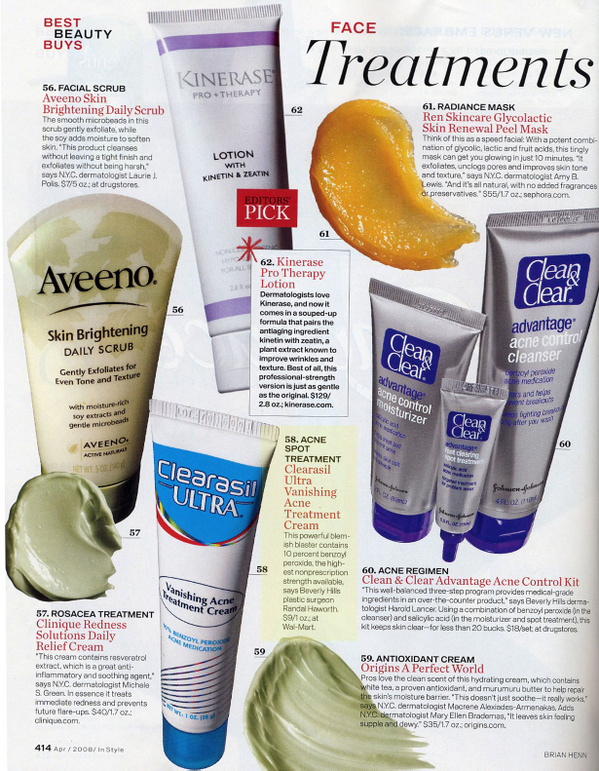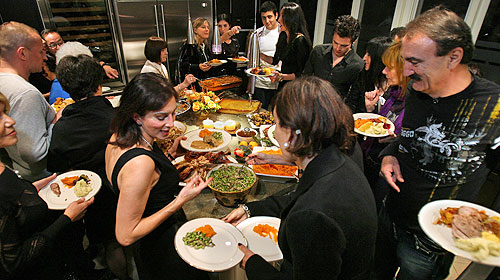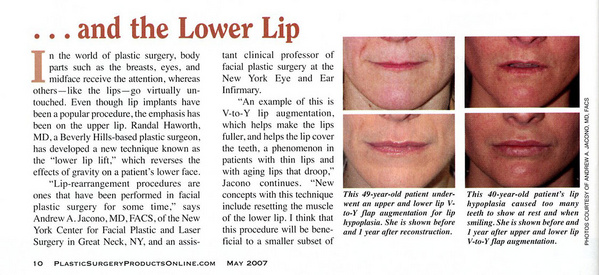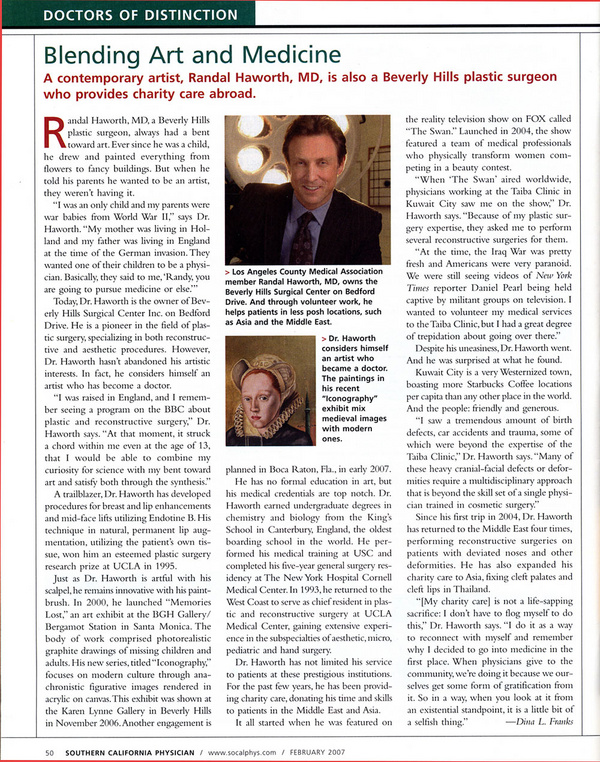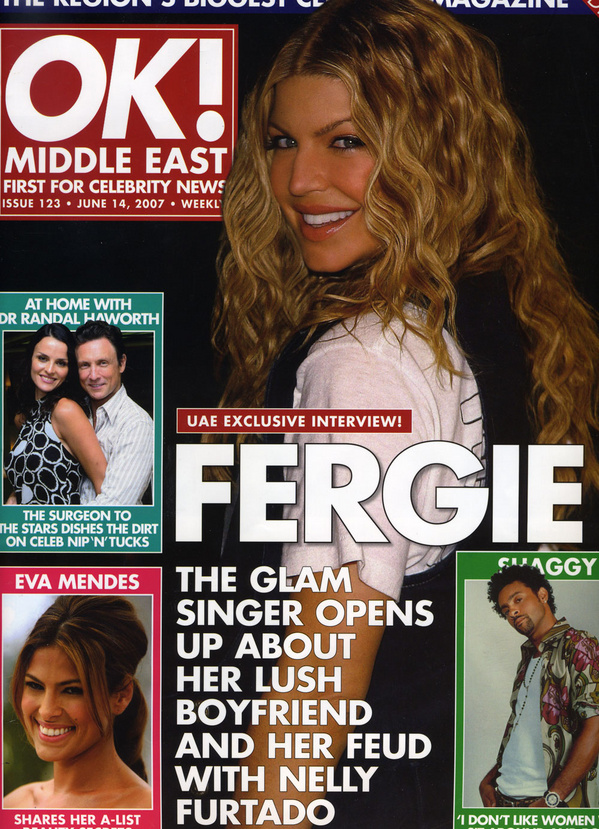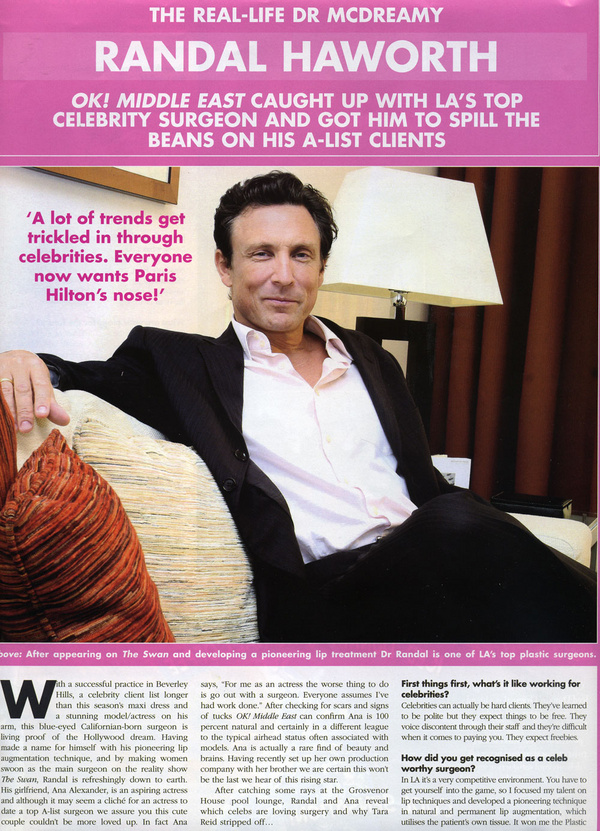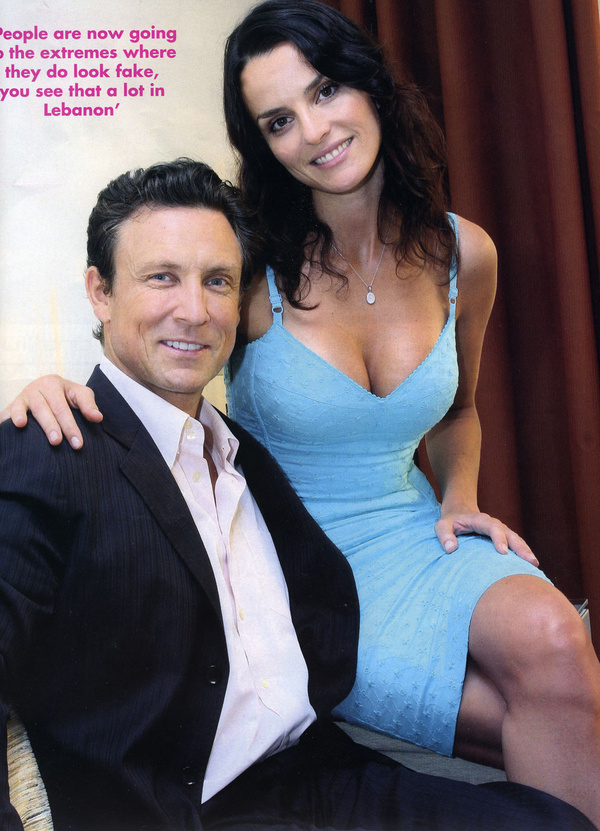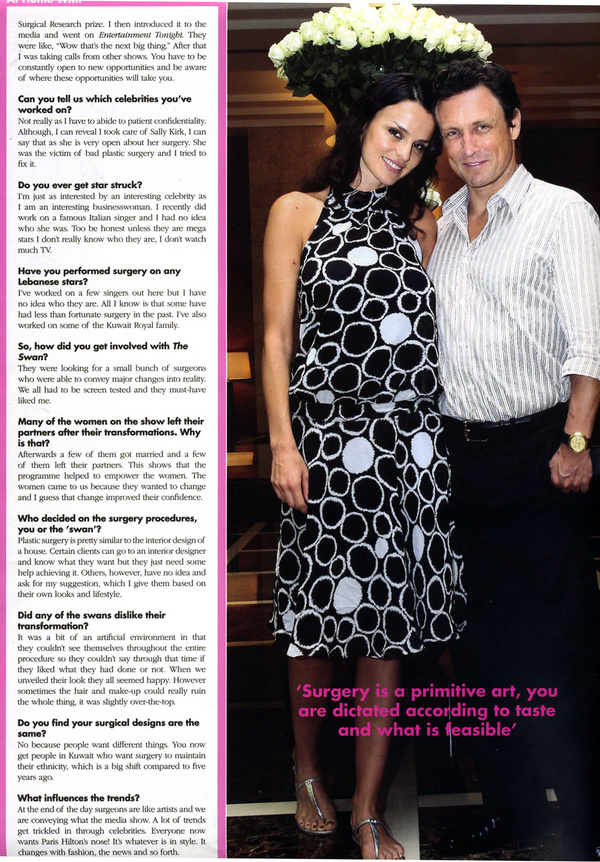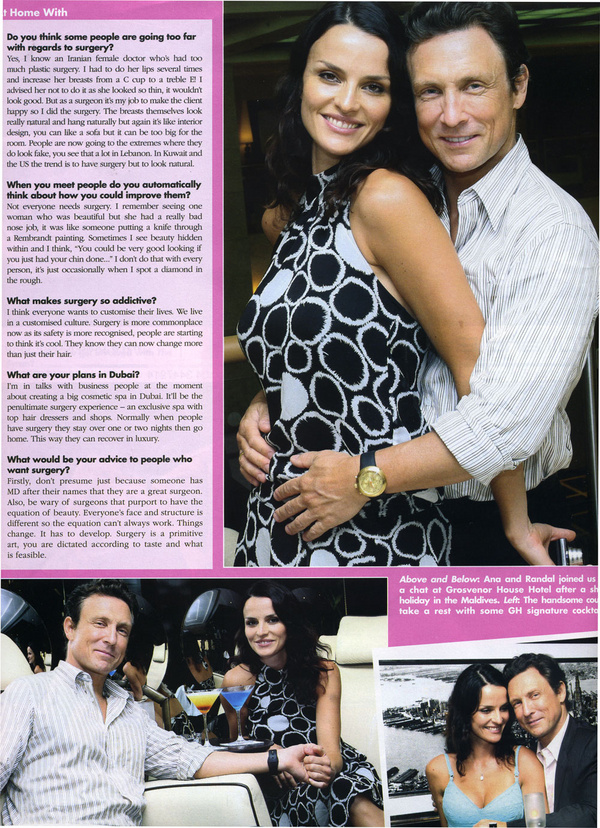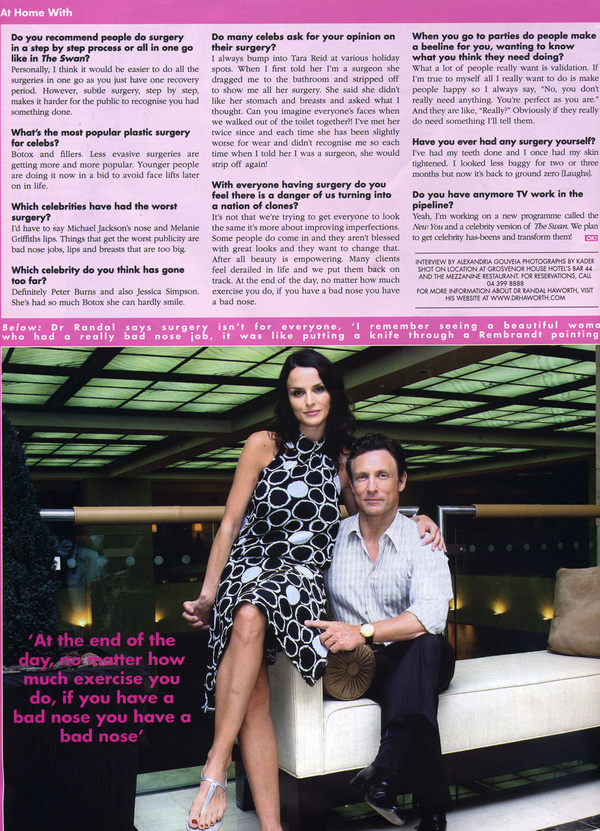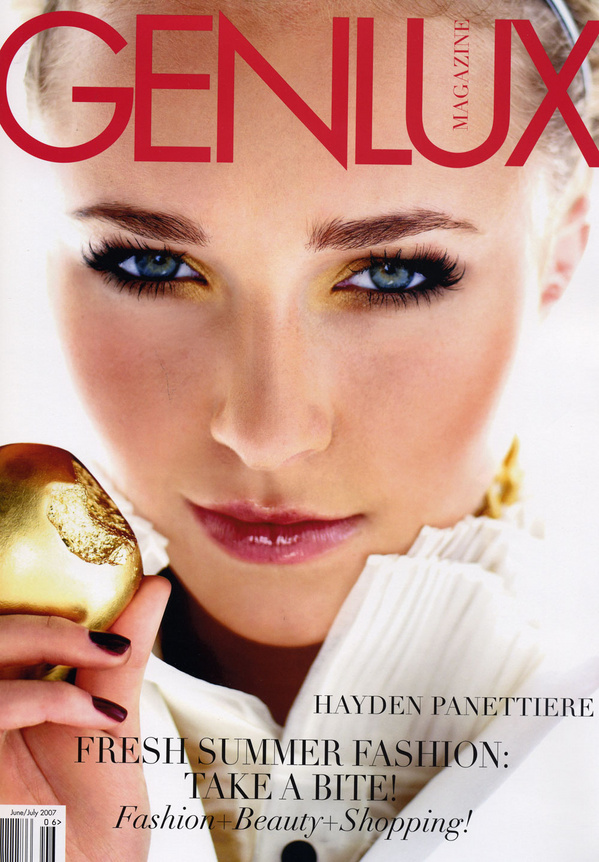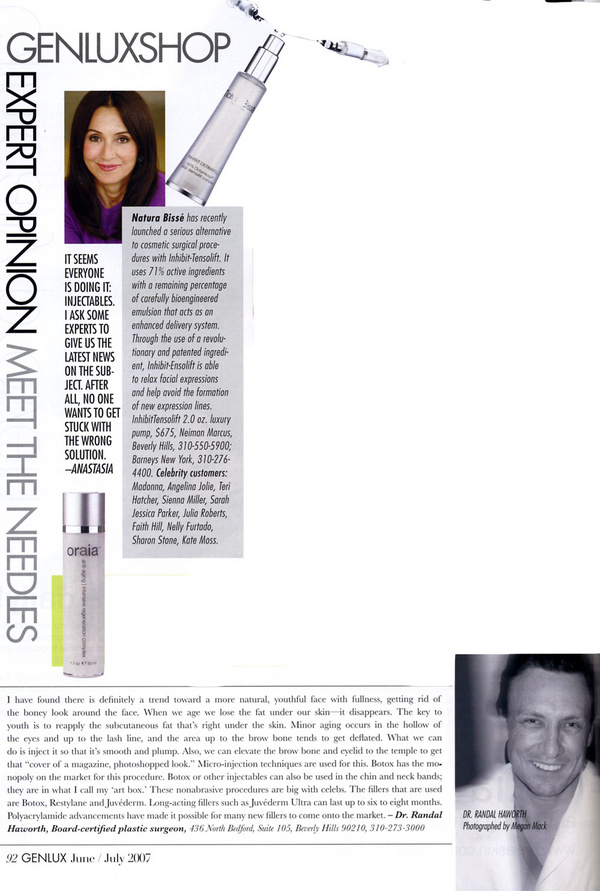By Steve Oney
Part 1: Getting In
Almost daily throughout the late summer and early fall of 2007, someone else looking for Craig Raywood pulled into the porte cochere of the Granville Towers on Crescent Heights Boulevard just south of Sunset. Shopkeepers and craftsmen, limo drivers and process servers, one by one they marched across the lobby with its dated art and grand piano. Built in 1930, the Granville, an eight-story French revival apartment building, is the sort of place where Old Hollywood lived when it was young. Ricardo Mayorga, the 24-year-old doorman, never failed to call upstairs to announce the visitors, although he knew the tenant in number 61 would not answer. He also knew the reaction this would spark in those seeking Raywood: exasperated mutterings, the slamming down of writs or summonses, and increasingly, outbursts that culminated in threats of bodily harm. Everyone left disappointed or furious, whereupon the phone at the front desk would inevitably ring.
“Were they looking for me?” Raywood would ask Mayorga from his quarters six floors above.
“Yeah, they were here. You owe them money.”
“They’re wrong. It’s a mistake. I’m not what they say I am.”
Soon enough Raywood would emerge from an elevator, oblivious to what had just transpired. Tall and preternaturally tanned, dark hair brushed back from a high forehead, teeth glistening, he didn’t so much enter a room as make an entrance. If he was headed for a daytime charity event at Virginia Robinson Gardens in Beverly Hills, he would wear a violet seersucker suit from Kiton. If he was attending an evening benefit for AIDS Project L.A. on the Fox back lot, he affected something more bohemian: a sequined tunic-length black linen jacket unbuttoned to the sternum to show off a $15,000 strand of Tahitian pearls dangling from his neck. For business it was always Armani accented by a pocket-handkerchief and a tiny Hermès crocodile bag. Even casual outings were occasions for the stylish gesture. In a pink polo shirt, khakis, and John Lobb loafers, and with his whippet, Giselle, in tow, he would depart by taxi for Barneys, where, once inside, he would let the dog wander off leash, or to Tiffany, where the sales staff would adorn her in jewels.
As Raywood liked to tell new acquaintances, he was a native New Yorker and “one of the preeminent international interior designers.” Indeed his work had been celebrated in House & Garden and The New York Times. That the bulk of this attention had come in the 1980s and early ’90s did not, in Raywood’s mind, diminish his stature. Rather, it solidified his place in the firmament. “I live in a certain way, and that’s a standard of my life,” he often boasted. “Whether that’s acceptable to you or anyone else, that’s the way it is.” For most of Raywood’s 57 years the world of fashion and wealth had been his natural habitat, and the names he dropped—Italian countesses, Andy Warhol’s Factory crowd, Manhattan hedge fund barons, Parisian aesthetes—suggested the guest list for a dazzling dinner party. Not that these luminaries weren’t flawed. While Raywood praised them to his lessers, thereby elevating himself, he disparaged them to his betters—especially potential clients—thereby elevating them.
“Craig’s an almost rascally figure whose charm lies in the old-fashioned comical disdain he has for people,” says a Beverly Hills physician. “He has this way of projecting that nothing is good enough.” Snobbishness, however, is just one of the faces Raywood presents. “His biggest talent is his disarming-ness,” says Gil Garfield, a West Hollywood painter who has known Raywood for more than 15 years. “He has an ability to make you feel immediately comfortable, that he’s intensely interested in whatever you have to say. He makes you feel totally at ease. In 20 minutes you find yourself telling him things you’d only tell someone after knowing them a long time.” The intimacies go the other way, too. The designer is adept at that most beguiling of gambits: the admission of vulnerability. Heartbreaks, a bad knee, reliance on pain pills—he speaks of them with pleading sincerity, sometimes hinting at more ominous difficulties in the not-too-distant past. “He seems sensitive, fey, almost beaten down,” says a Westside businessman. “He seems like a victim, so you trust him.”
The Granville Towers, which turned condo in the 1980s, were ideal for Raywood: a raffishly elegant apartment house. The designer had filled his unit—owned by the stylist Estee Stanley, who conceived the look of the Olsen twins and cofounded the women’s clothing line Miss Davenporte—with exquisite things. The living room was dominated by a sofa and chairs created by the turn-of-the-century Viennese modernist Josef Hoffmann. The master suite was papered in parchment, with a big pile of pillows where Giselle slept and a bed topped by a duvet cover from Pratesi. Meals were served on a shagreen dining room table. When guests were present, they pulled their leopard-print chairs up to place settings of Christofle silver in the “Cluny” pattern typically paired with yellow “Pompeii” china by Puiforcat, a line discontinued so long ago that a single plate, much less a set, is a rarity. In nearly every room specimen orchids vied with glass bowls of peonies. The most coveted spots, however, were reserved for framed photographs of the household’s twin muses. The model and actress Marisa Berenson—grandniece of art historian Bernard Berenson and granddaughter of fashion innovator Elsa Schiaparelli—was, the designer told everyone, his best friend. As for Raywood’s late mother, Ethel—herself an interior designer—she was the most elegant woman her son had ever known. She taught him everything.
By late September Raywood had been living at the Granville for two months, all the while dodging merchants and service providers and failing to exhibit much concern regarding the central fact of his tenancy: He had yet to pay Estee Stanley a security deposit or the $5,000 monthly rent, putting him $15,000 in arrears. It was sticky, but so was so much else about his life—and anyway, getting in had been a cinch. On a Friday in late July he and his realtor had met Stanley and her agent at number 61. Raywood was a bit coy, providing a credit report that did not contain a Social Security number, making a vetting of his financial history difficult. Even so, the match between the designer and the stylist seemed inspired, and they shook hands on a deal. A couple hours later Raywood returned and asked Ricardo Mayorga for the apartment’s key, saying he wanted to admit a cleaning crew. Since the doorman had just seen the stylish figure standing before him exchanging pleasantries with the owner, he said sure. On Saturday Raywood moved in. The next week, after his deposit and rent checks bounced, Stanley called the sheriff, but since the new occupant of number 61 was in possession of a lease that he claimed both parties had signed, there was little the authorities could immediately do. What made it so galling was that by every outward appearance Raywood seemed beyond reproach. When Stanley’s realtor dropped by the Granville to ask the designer to do the right thing, he still couldn’t believe what was happening. “He can’t be a scammer,” the agent thought. “He’s done up the apartment so beautifully.”
Raywood made it all appear effortless. People invited him into their lives. It was as if by dint of his grandiosity and society references, he lifted them to the same fabulous plane he inhabited. In the process he distracted them from his true purpose. “Craig doesn’t need burglar’s tools,” says a lawyer who has tracked him for years. “He breaks into your mind. He breaks into your heart. The rest is easy.” Despite Raywood’s cunning, as autumn 2007 approached his behavior became uncharacteristically erratic. He had been maintaining an illusion for nearly two decades, first in New York and now in Los Angeles, and he was growing exhausted. By material standards, his life had been phenomenal, overflowing with the best and the most expensive of everything. So much of it, however, had been obtained at the cost of others. He had multiple stories to keep straight and countless debts to elude. Just answering the phone or walking to the mailbox was work. The risk of slipping up was always there, especially if, as was presently the case, circumstances were desperate. Still, what occurred the evening of September 28 was unworthy of the designer’s talents.
Later Raywood would say that he’d been in a daze, his faculties impaired by one of the prescriptions he was on. He would claim that he couldn’t remember what happened. The police report, however, was detailed. Around 6 p.m. the designer walked into the West Hollywood Whole Foods Market. At the meat counter he picked out $43 worth of Spencer steaks and $31 worth of veal chops, yet rather than set the items directly in his cart, he placed them first in a chic leather bag to which he proceeded to add a half-dozen candles, three diffusers, two fragrance atomizers (one called “Heart Spirit,” the other “Pure Passion”), and $31.66 of Crossings chocolates. Scattering a few less expensive items atop his haul, the designer headed to the wine department. From a high shelf where the better French vintages are displayed he grabbed a couple Latour-Giraud Meursaults ($44.99 a bottle) and Haut-Surget Bordeaux ($25.99 each), which he put into a cardboard six-pack, shoving it onto the cart’s bottom rack, where it was hidden from view. As it happened, security had been watching and alerted the manager before Raywood got in line. During checkout the designer talked up the cashier but never opened his bag or gestured to the wine, paying only for those goods that served as camouflage. When he stepped into the parking lot, a guard handcuffed him. He was escorted back inside to the customer service booth, where he lay down and began to whimper. Once transported to the sheriff’s substation, Raywood was booked on felony burglary and thrown into a four-man cell.
The episode created a host of new problems. To begin with, Raywood had to phone Steven Kay, someone he’d been avoiding. Otherwise Giselle, who’d been waiting in the car, would have ended up in the county animal shelter. A few months earlier the designer had borrowed $15,500 from Kay, a 50-year-old realtor who’d once posed nude for Playgirl. The loan, which Raywood had secured with two pieces of contemporary art and a Franck Muller wristwatch, was coming due. It was uncomfortable, but he couldn’t think of anyone else to call. Then there was the $20,000 bail and the several-hundred-dollar fine for driving with a revoked license, not to mention retrieving his vehicle from impound. It was one thing after another, none of which the designer needed, especially now.
On the morning of October 1, two days after Raywood was released from jail, Judge Richard A. Stone called the case of Stanley v. Raywood in the Beverly Hills division of Los Angeles Superior Court. On August 10 Estee Stanley had served the designer with a notice to quit the Granville Towers. A couple of weeks later Raywood filed a handwritten response alleging in downloaded legalese that “landlord’s reasons for eviction are not among those set forth in section 17.52….” Nonetheless, the judge ordered Raywood to make a $10,000 payment on October 12 and one of $2,500 on October 22. If he hit both deadlines, he’d be allowed to remain in the Granville until noon on November 30. If he missed either payment, he’d have to fork over a lump sum of $15,000. Raywood was in a bind. Which is not to say that the obstacles were insurmountable.
For someone with Raywood’s gifts, Los Angeles was the land of opportunity. He could take advantage of the city’s insecurity about fashion and decor. Despite all the wealth in L.A., much of it is temporal—a hit TV series, an executive position at a studio—and at least in matters of interior design, there’s more concern with comfort and first impressions than with provenance. That’s not true back east, especially in New York, where clients are willing to pay handsomely for important pieces—pieces that are not just beautiful but also have history. Because Raywood billed himself as an arbiter of style favored by Manhattan’s old money, because he carried himself with such authority, he was accorded an added respect here. The setup was perfect—he might never run out of new prospects to seduce.
Part 2: Beware of the Biggest Scam Artist
Chen Loft in Hollywood is a vast open space packed with so much furniture and so many objets from such a wide range of places and periods that it is less an antiques shop than an emporium of wonders. “Joel Chen wants to own everything, and he’s pretty much succeeded,” says an admiring competitor. Sleek Robsjohn-Gibbings chairs stand next to giant plaster clamshells. Midcentury brass-and-glass chandeliers mingle with minimalist stainless steel benches, baroque lamps by Tony Duquette, and ivory dragons. In the 35 years he has been in business, Chen has done much to define Los Angeles’s aesthetic—serious yet playful and unwilling to limit itself to a single look or era. On October 9, three days before his initial payment was due to Estee Stanley, Craig Raywood walked inside.
Over a two-week period Raywood returned to the Loft several times and also visited Chen Vault, a massive new showroom the dealer had opened in Culver City. His client, he told Chen’s staff, was a Russian heiress who lived in a gated community off Benedict Canyon. He was, he said, transforming her Italianate mansion into something less gaudy, and Chen’s holdings included exactly the right pieces. A Josef Hoffmann demilune seating arrangement similar to the one the designer had at the Granville—he wanted it. A Hoffmann “Sitzmachine” armchair—he had to have it, too, along with a circa 1940 patinated leather sofa by Kaare Klint. Because Raywood needed to let the client see the furniture in her home, he asked for and received the courtesy extended to top-of-the-line designers—he could take the pieces out on approval. He secured them by leaving an American Express card number: 3715 377353 52025. Since the antiques business still largely functions on trust and a handshake, Chen’s sales associate didn’t run the number, putting it instead on file for the date when, if all went well, the purchase would be completed. By October 18 Raywood had taken out 13 items valued at $102,800, and a trucking service had hauled them away.
In a world where a single antique can go for more than $250,000, Raywood’s activities did not set off alarms. The more outrageous a designer’s demands and the more imperious his demeanor, the more legitimate he seems to be. This is a profession whose major players think nothing of swanning into a place like Chen Loft, a cell phone at their ear and an assistant at their side. Between snatches of conversation with the person on the other end of the line, the tastemaker eyes the merchandise, indicating with a nod and a snap of the fingers the commode or armoire suitable for his multimillion-dollar project. The shopkeeper, aware he is in the presence of money’s emissary, puts the pieces on hold. By these criteria Raywood seemed aboveboard.
On October 31 he reappeared at the Vault, where for the first time he met Joel Chen himself. The dealer was put off by the designer’s getup—on this occasion, something from the disco past—but he was impressed by the contents of the portfolio he’d brought along. Multiple magazine and newspaper layouts gave every indication that Raywood was who he claimed to be. The good feeling, however, lasted only a few hours. That evening Chen had a dinner date at Musso & Frank with Stephen Tomar and Stuart Lampert, old-line Los Angeles interior decorators. Conversation consisted largely of shoptalk until Chen mentioned that he was doing business with Craig Raywood. On hearing the name, Tomar and Lampert blurted in unison, “Watch out.” Raywood, they said, had ripped off a dozen or so Angelenos, some of them rich clients, the rest in the design business. “Joel,” says Tomar, “turned blue.”
The next morning Chen’s staff ran the American Express card number—it was invalid. By now they also had reviewed a surveillance tape shot during Raywood’s visit to the Vault the previous day. It showed the designer reaching into a jewelry display case. Following his departure, an African ring acquired from the estate of the late actor Paul Winfield was missing. In a panic, one of Chen’s associates phoned Raywood, who, the dealer says, acknowledged taking the ring and promised to return it and the furniture. That afternoon, however, when Chen and three workers arrived at the Granville Towers to collect the goods, Raywood refused to let them up to number 61. “At that point,” says Chen, “I knew my pieces were in jeopardy. I knew it was going to be a long haul. This guy is there to hurt you. He’s a professional.”
From the black A Bathing Ape knit shirts, black Dior slacks, and unlaced black Converse All Stars that make up his standard uniform to his spiky, graying black hair, Joel Chen comes across as at once suave and defiant, the picture of contemporary L.A. cool. “He can be warm, but he can also beat you up,” says a rival. The stance stems in part from the Shanghai-born Chen’s experiences in the early ’70s, when he was getting started. He called on a Melrose Avenue antiques shop only to have the owner refuse him entry. Incensed by what he perceived as an ethnic slight, he borrowed money and launched his own firm. Three decades later he’s just as combative.
Chen immediately filed a report with the Culver City Police Department accusing Raywood of stealing his pieces and secured a writ of possession from Los Angeles Superior Court ordering their return. He then hired process server Greig Donaldson, who staked out the Granville Towers from a window seat in the second-floor dining room of a McDonald’s across Crescent Heights. Donaldson’s intent was to swoop down on Raywood, but after two days of watching, he never saw the designer. Not that this was a surprise. “Craig wouldn’t come out,” says doorman Ricardo Mayorga. “When he had to walk the dog, he took the rear exit.” While Chen slipped Mayorga and his coworkers $20 here and $100 there to report on Raywood’s comings and goings, it was to no avail. His flamboyance notwithstanding, the designer knew how to disappear.
As Thanksgiving approached, Chen had talked to enough people to grasp that Raywood’s activities were much more extensive than Tomar and Lampert had imagined. After downloading a picture of the designer from a Web site and compiling a list of 20 Angelenos who said they’d been defrauded, Chen drove to the Granville, where for the next hour he nailed homemade “Wanted” posters to telephone poles and tucked them under the wiper blades of parked cars. He then drove to the Pacific Design Center, home to most of the city’s design showrooms, where he distributed more posters. By the time he was done, they were nearly everywhere. CRAIG RAYWOOD: BEWARE OF THE BIGGEST SCAM ARTIST & CRIMINAL! roared the opening line. HE IS WORKING IN THE WEST HOLLYWOOD & BEVERLY HILLS AREA.
Several days after the posters went up, Chen received a call from a lawyer representing Raywood, who arranged for the recovery of four of the dealer’s pieces; another lawyer negotiated the return of the ring from the Winfield estate. That was the last Chen would hear from the designer. On November 30 Raywood, having made his payments to Estee Stanley, moved out of the Granville Towers. Two more weeks would pass before Chen learned the fate of his most expensive items. Not only had the designer never delivered them to his putative client, but he had hocked them. The best ones, including the Hoffmann seating arrangement, went for $11,500 to South Beverly Wilshire Jewelry & Loan, a deluxe pawnshop where over the years stars in duress have liquidated their possessions. The others went to Uniquities, a Brentwood consignment house that also had acquired a couple of French Empire pieces Raywood had taken out on approval during the same period from Connoisseur Antiques on Melrose Place. Bijan Sotudeh, owner of Uniquities, estimates that he fronted the designer $30,000. Just that easily Raywood had generated more than $40,000, enough money to pay a few creditors, put his furniture in storage, and begin doing what he needed to do next. The designer gave no indication that anything was amiss, and from his perspective nothing was. He had not only survived—he had profited. Before Christmas he and Giselle were gone.
Part 3: Who Is This Guy?
For at least a few hours on a spring evening in 2005, two years earlier, Craig Raywood had been what he said he was—a sought-after interior designer around whom socialites and Hollywood players clustered. Raywood had moved from New York to Los Angeles several months before, and it’s not much exaggeration to say he had devoted almost all of his time preparing for this occasion. He had spent, by his account, tens of thousands of dollars transforming his rented West Hollywood bungalow into “a charming romantic cottage, a little Italian, a little English, a little French.” Just east of Doheny on Rosewood Avenue, the home sent exactly the right signal, and exactly the right people were now receiving it.
In the living room HBO Films president Colin Callender was admiring a stunning floral centerpiece. In the master bedroom a clutch of society-page princesses—Wendy Stark (daughter of the late mogul Ray), Amy Lumet (daughter of director Sidney), Angela Janklow (daughter of agent Mort), and Cornelia Guest (daughter of the late style icon C.Z.)—peered into an open closet displaying rack after rack of suits arranged by color and fabric. Standing beneath an Austrian chandelier in the dining room, West Wing producer Lawrence O’Donnell rubbed elbows with Paris Hilton’s publicist Elliot Mintz. Out back the painter Kenny Scharf and the novelist Bret Easton Ellis stood drinking amid freshly planted rosebushes and angel’s trumpet trees as waiters passed trays of sliders. Floating everywhere was Nikki Haskell, the self-styled diet guru and perpetual debutante. Ostensibly the party was for Raywood’s houseguest, the New York celebrity photographer Patrick McMullan. In truth it was all about the host. “Craig was very on,” says Ryan Tasz, at the time McMullan’s West Coast representative. “All these people were Patrick’s friends, and Craig wanted to impress them and have them as clients. He was working it. He wanted to show off the house so people would ask, ‘Who is this guy?’ ”
Raywood had left New York, he told most who asked that evening, because he was having difficulties with his boyfriend of 16 years, Michael Cancellare, a Long Island divorce lawyer. The split was not final—Cancellare paid the first six months’ rent at the Rosewood house with a $22,200 cashier’s check—but Raywood wasn’t looking back. Although he was loath to be specific, the designer occasionally alluded to professional misadventures that had also played a part in his decision to move west. “He had a dark cloud hanging over his head,” says Leah Sydney, a freelance journalist who ran into Raywood at parties. Yet the shady aura, far from diminishing Raywood’s appeal, further enhanced it, lending an air of mystery to the ambition plainly at work. The Rosewood house was nothing less than a showcase, and the event for McMullan marked the public unveiling of Raywood’s campaign to establish himself in his new hometown. As the designer saw it, Los Angeles was a backwater. “Craig thought L.A. was very naive about style,” says someone who worked with him early on. Making a splash, however, was only part of what it would take. To get in the game in a big way he needed entrée to the city’s Westside bastions of affluence.
Raywood almost immediately met with success. Sanford Spielman, an architect who developed much of the property around Lake Hollywood and considerable chunks of the San Fernando Valley, and his wife, Lois, had been close to Ethel Raywood and had known her son forever. Over the years they’d introduced him to such friends as the painter Gil Garfield. When they heard Raywood was moving to Los Angeles, they put him in touch with some of the city’s most status-conscious figures, among them Joe Babajian, who would become the designer’s first L.A. client. A realtor with Prudential California, Babajian shared the listing on the $22 million property bought by David and Victoria Beckham. Most years he topped $100 million in sales. In late 2004, the realtor was putting the finishing touches on a mansion of his own in the upper reaches of Beverly Hills. Construction was nearly done, but the interiors had a long way to go, and Raywood went right to work, executing plans and ordering custom-made thermal-glass screens to front the living room fireplace, fabric for upholstering chairs and sofas, and shades for the sconces in the bedrooms and baths. “Craig has wonderful taste,” says Babajian. “He knows about different stores and designers and is fun to be with.” For a designer new to the city, this was a splendid start. He had landed a client whose job it was to sell palatial homes, many of them in need of decorating.
Raywood’s second Los Angeles client was also referred by powerful patrons—Nathan Serota, who made his fortune building shopping malls on Long Island, and his wife, Vivian. During the 1980s, the couple had introduced Raywood to their friend Kenny Solms, the cocreator of The Carol Burnett Show and a producer of The Smothers Brothers Comedy Hour. Now that the designer was in town, he decided to renew the acquaintance. “Craig called me, and I invited him to lunch,” Solms says. A graying 66-year-old, the producer favors dowdy checked sports shirts and nylon track pants and gives the impression of being perpetually distracted. “Craig told me he wanted to break into the design business here,” says Solms, “so I took him to my home.” A cluttered ranchburger also in the upper reaches of Beverly Hills, the house, like its owner, simply needed a new wardrobe.
“I bet you could jazz this place up,” Solms told Raywood, and the two were off, parading through antiques shops on La Cienega and jewelry stores in Beverly Hills. “I found him delightful,” says Solms. “He has a great eye.” Within weeks the designer had purchased his new client a pair of leather club chairs, Convivio china, Fabergé wineglasses, and a set of Alain Saint-Joanis flatware that went for $8,292.
As he was moving forward on the Babajian and Solms jobs, Raywood met someone who could connect him to a higher and more glamorous stratum of Los Angeles. At a party for Planet Hope, a charity run by Sharon Stone’s sister, the designer introduced himself to Vivian Turner, for years the actress’s stylist. “He was incredibly charming, acted like he was loaded, and was flawlessly dressed,” says Turner. Soon the two were inseparable. “I was his straight wife, and he’d call himself my gay husband,” she says. “We talked constantly on the phone. He’d have me over to his house, and we’d get in bed under a Hermès blanket and watch romantic movies. He’d fix me chamomile tea. And he’d always want to buy me presents.” One day at lunch with Turner and some of her girlfriends at the Polo Lounge at the Beverly Hills Hotel, Raywood had a salesman and a security guard from the lobby jewelry store—the California outpost of Asprey, gold- and silversmiths to the Prince of Wales—bring over a necklace for Turner to try on. “He wasn’t really going to buy it for me,” she says. “It was just for show. But a woman always dreams of having something like that happen. He was sealing the deal.” The deal was that Turner would introduce the designer to Sharon Stone. He believed the actress was destined to be his new muse.
Part 4: We Got Screwed
So what if Craig Raywood’s striving was obvious? Los Angeles rewards the obvious. If he was overly opportunistic, that was also not a problem. Members of his profession may create beauty, but most depend on the largesse of their clients, and the wealthier and more famous the clients, the greater the possibilities. Yet even as Raywood was making inroads, stories were beginning to circulate. Because interior designers are among the few members of the help who enter through the front door, they come to know a home owner’s most private details. They know whether the man of the house obsesses about his stereo components and whether the woman uses a bidet. They have access to information about diets, television viewing habits, sexual proclivities, and most intimate of all, budgets and bank accounts. Implicit in the relationship is an almost priestly level of trust. When that trust is broken, it’s not just business—it’s personal.
“The gist of it is I paid for stuff that was never delivered,” says Joe Babajian. “I kept calling about the damn screens, and he’d say, ‘They’re in Brooklyn being refinished.’ Worse, I ended up paying him for a lot of stuff twice. He charged my American Express card, and he billed me with invoices, and it happened more than once.” Several months into the project, Babajian had spent nearly $134,000—by his lawyer’s reckoning, some $25,000 of it on double billings—and was angry that the Spielmans had ever introduced him to the designer. Babajian says he would have been more on top of things if his partner hadn’t been ill and died two weeks after he moved into his new home. “Craig,” he says, “caught me with my guard down.”
For Solms, the first inkling that Raywood might be trouble came when he opened a bill from Blackman Cruz, the renowned antiques dealer, to find that he’d paid for a $1,200 bronze studded lamp he never ordered. Raywood admitted that this was his own purchase and the charge was expunged, but Solms was discomfited. Then a more vexing incident occurred. Upon returning from a trip to Europe, Solms discovered that Raywood, without consulting him, had removed most of the contents of his living room, replacing them with extravagant new items. “He said, ‘I have a surprise for you,’ ” says Solms. “I wasn’t heavy about it, but I was pissed. I said, ‘Craig, you may have meant well, but I want the furniture to go’—and you know what he did? He charged me for its removal.” Three weeks later Solms opened his MasterCard bill to find an unexpected $3,000 charge from Neiman Marcus. When he confronted Raywood, the designer pleaded ignorance, but the store informed Solms that Raywood had made the purchase. The $3,000 was for a silk suit he had bought his ex-boyfriend in New York. “He’d overheard me give my credit card number to Blackman Cruz,” says Solms, “and went to Neiman Marcus and used it. Neiman’s credited my account and Craig returned the suit, but now I knew he was a thief.” That Solms never received something he actually had ordered from Raywood, a $5,300 rug for the house’s main hallway, seemed almost beside the point.
Vivian Turner also soon found out that she didn’t want Raywood in her life. In February 2005, he hosted a birthday party for her—“an intimate party for a few people,” she says. Raywood was determined that Sharon Stone come. He invited all the other guests by phone, but for Stone he went to a boutique paper store, Soolip, and ordered a custom-made invitation executed by a calligrapher. He hand delivered it to the actress’s house. Stone didn’t attend. Several days later he asked Turner to take him to a baby shower for Stone, telling her he’d already bought her child a present. That’s when Turner started to worry. She told Raywood the occasion was private and that everyone had to sign a confidentiality agreement. “He was very offended,” she says. “He said I had ‘bad energy.’ I was hurt, but it was my fault. I fell for the attention he showered on me, when all he really wanted to do was get next to Sharon. He called a few days later and said, ‘Can’t we start over?’ ” Turner said no.
Had the clash with Turner and the problems with the Babajian and Solms projects been anomalous, they could have been discounted. Design jobs implode every day, and operators, if not always as ostentatious, are commonplace in Hollywood. Yet as Solms was the first to realize, Raywood’s actions were part of a larger pattern in which moneyed Angelenos and the businesses that serve them were the targets.
Solms’s best source was Raywood’s housekeeper. On arriving in the city, the designer had sought referrals for good help, and Solms had suggested his man. Luis Vargas quickly learned that the Rosewood bungalow was practically under siege. Not long after Raywood moved in, he installed a $1,729 video surveillance system. To some, this strengthened the impression that he was concerned about threats from back east. But to the housekeeper, the designer’s problems appeared to be local. Raywood would use his monitoring system to avoid the parade of shopkeepers and professionals who stormed up the walk. If he were not at home, Vargas would open the door and catch an earful. “Luis told me all of the gossip,” says Solms. “He said, ‘He owes the dry cleaner. He owes the drugstore. He owes the wine merchant. He owes the dentist.’ ”
Solms spent several weeks corroborating what Vargas told him. The manager of Du Vin, a small, elegant West Hollywood shop that specializes in French wine, told him that Raywood had ripped off $800 worth of merchandise, including a case of Château Lafite’s Duhart-Milon. “He came in and said he was throwing a party for Sharon Stone—like we’d be impressed,” says Robert MacMillan. “He wrote us a check and then returned a few days later, before we’d received notification that the first check was bad, and wrote us another one. It was bad, too.” The owner of Mickey Fine Pharmacy in Beverly Hills said Raywood had scammed him as well. “He came in and told us he had just moved to town, and it was great to find such a good pharmacy,” says Jeff Gross. “He had a smooth story. He dropped the names of regular clients. He told us his credit card had been misplaced, and he was waiting to get insurance, so we opened a house account for him. He may have made one payment, but he never paid us another cent.” The drugstore was out $2,172. Helene Cohen Hale, a sales associate at Gearys Beverly Hills who’d known Raywood in New York, offered a similar tale. “He got Buccellati silver and William Yeoward wineglasses,” she says. “He had a house account he didn’t pay and an AmEx that was no good. Afterward he had such nerve to come in with Giselle like nothing had happened. I said, ‘Craig, you have embarrassed me in my place of work.’ He had no shame.” The loss was just over $10,000.
Solms also uncovered an incident in which Raywood had turned violent. It involved an encounter with Chung Sun Sohn of Artistic Hand Laundry, where the designer took his high-thread-count linens. According to the sheriff’s report:
Raywood entered the cleaner and wanted to pick up his cleaning. Sohn said that over the course of several months every check that Raywood has given them…has bounced.… Sohn said he went into a drawer behind the counter and produced several bounced checks.… Sohn said Raywood became upset at the sight of the bounced checks and attempted to grab the checks from his hand. Sohn said when he tried to pull away from Raywood’s grip Raywood punched him in the face.
The litany went on. Raywood had taken Doheny Cleaners, which pressed his suits, for $2,741; Connect Television, which installed his flat-screen sets, for $1,759; and Dr. Phillip Gorin, a Brentwood dentist, for $2,700 of oral surgery. When the six months of prepaid rent on the Rosewood house came to an end, the designer stiffed his landlord, Joel Ring. For Solms, however, the most astonishing bit of news concerned the party Raywood threw to introduce himself to the city’s glitterati. “When the night ended, Craig went into his bedroom and closed the door even though he hadn’t paid the chef and waiters, who were still cleaning up,” says Patrick McMullan, the guest of honor. “They had worked for him before, so they figured they’d get their money the next day. A month later a friend called and said, ‘You’re not going to believe what happened. Craig never did pay them.’ I’d always liked Craig. I thought he was funny. But I felt defrauded, too.”
The scope of Raywood’s activities mesmerized and appalled Solms. Here was a designer of talent. Affected? Yes. Exploitative? Undoubtedly. Still, you wanted to believe in him. He could be so convincing. He was great company. He seemed to care so much. But quickly a duplicitous person emerged. It was a puzzle. More than that, it was an affront. “I’d like to have sympathy for Craig,” Solms says, “but I can’t. He’s too social. There’s too much name-dropping. He uses people. And when I think of his expensive things—if he’d just gone to Bed Bath & Beyond for his sheets, I might have dropped the matter, but the linens from Pratesi rankled me.” In the initial flush of his resolve, Solms sat down and wrote Raywood:
It must be so tedious and exhausting being you. What’s it like to know inside that every day and minute of your life you cheat and swindle?… Are you just immune to all the daily reminders of your lying ways? Do you somehow switch it in your mind and blame everybody else for your deceits and dishonesties?… Do you think we’re all naive and are yours for the taking?
Solms ultimately decided against mailing the letter. It felt like a futile gesture. Instead, in concert with Joe Babajian, he put together an event that became known as the “We Got Screwed by Craig Raywood Party.”
The gathering, which was a cross between a support group meeting and a strategy session, convened late in the afternoon of July 28, 2005, in the conference room of Babajian’s Prudential California office in Beverly Hills. Among the victims attending were Mason Citarello, chef at Mason Jar Cafe (a West Hollywood restaurant that had catered several Raywood events), Citarello’s lawyer, a couple of antiques dealers, Jeff Gross of Mickey Fine, the proprietors of Du Vin and Doheny Cleaners, Dr. Phillip Gorin, and the designer’s landlord, Joel Ring.
The session started off with people competing to top one another with tales of outrage and woe, but as the talk turned to what they might do, the enthusiasm dissipated. To a person, the group’s members agreed that if they went public, it would be mortifying. They would be forced to reveal themselves as dupes who’d been taken in by no more than some fancy talk and a confident demeanor. Those in the design business were especially fearful of exposure: They wanted to avoid anything that reflected badly on their stock-in-trade—their images. The lawyer said they could band together in a class action suit, but the results would be uncertain. “I got the sinking feeling,” says Babajian, “that there wasn’t anything we could do.” Adds Solms, “Raywood relies on attrition. He knows that you’ll get worked up, but he counts on the fact that you’ll fade away.” Still, no one was ready to surrender. They had all been victimized in a peculiarly unsettling way. Unlike a mugger, Raywood had taken more than their money—he had violated their faith.
As for Raywood, he seemed vaguely cognizant that he’d made some mistakes, yet he was unwilling to assume responsibility for them. “He’d call me,” says Solms, “and say, ‘I know there have been things we’ve disagreed about and that you might find my behavior not what you think it should be, but I really love you, not just as a client but a friend.’ ” His problems, Raywood felt, stemmed not from his actions. Rather, they resulted from the inability of most people in Los Angeles to appreciate his refined sensibilities. “I think there are some jealousy issues,” he would say. As a consequence, Angelenos persecuted and conspired against him. They didn’t understand him. Worse, some of them were saying things that undermined the designer’s most cherished possession—his own image. But he knew how to deal with that.
“When we’d talk,” says Solms, “he’d make these slightly threatening jokes. He’d say, ‘I’d be careful what you say about me because your house might burn down with you and that housekeeper in it.’ ” Raywood made the same type of comment to Vivian Turner. After the stylist told a friend that the designer was a “scam artist,” thereby nixing an invitation to the GLAAD awards banquet, she says he left a message with her answering service. “He said I better keep my mouth shut, because he had way more money than me and a lot meaner dogs—like he had the power to ruin me. I took it as a death threat.”
Part 5: The Swan
Several weeks after the “We Got Screwed” meeting, Craig Raywood walked into the Haworth Institute in Beverly Hills for a consultation with the founder, Dr. Randal Digby Haworth. A plastic surgeon who starred in The Swan, Fox’s extreme body makeover series, Haworth approved of Raywood’s buttery cashmere sweater and his Tod’s driving shoes worn without socks. Raywood, in turn, was impressed by the doctor’s swept-back locks, English manners, and Pirelli sneakers. “Oh, I’ve got a pair of those,” the designer said. That Raywood liked to carry a portfolio of magazine clippings and that Haworth had a portfolio of his own—with articles from Vogue and People—open on the waiting room table made what followed all but inevitable.
Raywood didn’t like the way he looked anymore. His face was too puffy, his chin too droopy, and his belly straining too noticeably against the fabric of his fitted shirts. He wanted Haworth to do something—now. Because a mutual friend had introduced the designer to Haworth, and because the doctor’s experience told him that when a man wants plastic surgery, it’s best to act before the impulse passes, he promised to get him right in. “We generally have set rules,” says Haworth, “but our rules were bent. We accepted payment that was rendered without confirming the source of the funds. We usually have a two-week window, but we took a check from him five or six days before surgery.” That was September 12, 2005.
Five days later Raywood underwent a seven-hour procedure that included facial sculpting, multiple-site liposuction, and a tummy tuck—the works. That evening he returned to Rosewood and the care of two female nurses from Majestic Recovery Retreat, a firm that typically treats postop plastic surgery patients at the Hotel Angelino in Brentwood but also offers in-home services. From the outset nothing went right. Although Raywood was undoubtedly in pain (“He looked like the Mummy,” says one of the nurses), he behaved, by all accounts, abominably. “He was a nightmare,” says a friend who dropped by to check on his progress. “He cursed at the nurses. He threw pill bottles at them.” At eleven o’clock on the second night of his convalescence, Raywood called Haworth to complain that the nurses were destroying his valuable stemware and to demand he locate a male nurse to replace them. “He’s screaming, a total prima donna, like out of a Sidney Sheldon novel,” says Haworth. “How can you find a male nurse at that hour?” Scrambling, the doctor located Jim Wade, a big, blond, former law enforcement officer. “He’s delicious,” the designer later cooed over the phone to Haworth.
Wade looked after Raywood for three days, seeing him through a complication—a neck hematoma—that he believes could have been caused only by the designer’s decision to remove his bandages prematurely. “You want to keep pressure on the area,” says the nurse. “The first thing I did was rewrap his head.” Raywood healed, and both Haworth and Wade say the operation was a success. “I delivered beyond expectation,” says the plastic surgeon. “Everything was beautiful.” Adds the nurse, “I compared pictures I saw of Craig before to pictures I saw later—he really changed his looks, like an old gangster who’d changed his appearance.”
A week or so after the procedure, Haworth learned that the check Raywood had given him bounced. “Craig said, ‘Redeposit it,’ ” says the doctor. “I never like that. So I went to the bank and discovered the thief in him. The check had been drawn on an account that had been closed six months.” When Haworth pressed Raywood, he was unrepentant, maintaining that the hematoma provided sufficient basis to withhold payment. What was occurring began to sink in. “You slowly realize you’ve been conned,” says Haworth. “It’s like Elisabeth Kübler-Ross’s five stages.” His loss was $18,272. Majestic Recovery was having a similar experience with Raywood. “He said our nurses were incompetent,” says the firm’s manager, Ruzica Leskovar. “He’s very clever. He’d planned it all along.” She was out $1,181.
Altogether the designer had conned more than $19,000 in medical treatment. According to Jim Wade, Raywood was pleased with the results. In fact, he praised Haworth’s skills. “He said, ‘I don’t like the asshole,’ but then said, ‘He does very good work.’ ”
Part 6: To Court
The worst thing about getting scammed is that on the deepest level the victims believe it was their fault. Why didn’t they see it coming? How could they have trusted the guy? Shame, blame, embarrassment, depression—the innocent experience the emotions associated with the guilty. Hold them inside and they’ll fester. Let them out and you risk a scene. By late 2005, Craig Raywood’s victims were starting to accost him on the streets. The owner of Du Vin spotted Raywood in his car and pounded on the window. Joe Babajian’s new boyfriend got into a shouting match with the designer outside a West Hollywood nightclub. Then there was Haworth.
Several months after operating on Raywood, Haworth strolled into the Little Door, a 3rd Street restaurant where the designer enjoyed hanging out. “It’s like you’re in Morocco, a place I happen to be partial to,” Raywood liked to say. As the doctor was waiting for his date, he spotted Raywood at the bar and walked over. “Craig looked me up and down and said, ‘Oh, how are you?’ I said, ‘Not so good since I see you. You owe me money.’ He said, ‘What about my scars?’ ” At this Haworth exploded: “I don’t give a fuck about your scars. Go screw yourself, you cocksucker.” The doctor then stormed off, but any satisfaction he felt was short-lived. The encounter left him shaken. “I’ve never said that to a patient before,” he says. “I’m sorry I didn’t come up with an Oscar Wilde retort.” Exactly so. Even when the designer’s victims confronted him, they often felt like fools.
Raywood, on the other hand, was unflappable. “The guy has zero remorse,” says Haworth. “He did what he did to me with the cool calculation of a serial killer. He’s a sociopath.” Robert Burnside, a realtor who worked with the designer during this period, uses a different analogy. “Craig’s a vampire,” he says, “and L.A.’s culture is tailor-made for him. He preys on people who think they have style. He sneers at them behind their backs. Getting their money is like getting their blood. It’s thrilling for him.”
The only possible source of relief was civil litigation, and on December 14, 2005, when Haworth sued Raywood for $25,000 in Los Angeles Superior Court, the lawsuits began. Since most of the designer’s victims had been taken for relatively minor sums, they were forced to file in small claims court. Over time everyone from Kenny Solms and Joe Babajian (who ultimately assessed his losses at $7,500) to the proprietors of Mickey Fine Pharmacy, Doheny Cleaners, Connect Television, Majestic Recovery, and a number of other businesses, among them International Flooring, Quatrain antiques, Jean de Merry antiques, Blackman Cruz, and LA Caractere Jewelry, filled out the appropriate forms and submitted them to the court clerk.
It was the start of a long and tedious process. In small claims court plaintiffs and defendants, all operating without counsel, can repeatedly delay hearings, a tactic at which Raywood proved excellent. Hiding behind his home security system, the designer made it almost impossible for process servers to deliver the necessary papers. On those occasions when he was served, he sought continuances, asserting that a nagging knee injury had incapacitated him. “I will be recovering from surgery then out of state,” he wrote on February 2, 2006, to avoid appearing in the matter of Solms v. Raywood. The designer couldn’t duck every date, but even when he appeared, he seemed immune. Sauntering into the Beverly Hills Courthouse, Los Angeles’s main forum for celebrity justice, Raywood was so tailored and coiffed that he turned the heads of county employees otherwise inured to A-list litigants. Female clerks begged him for fashion and grooming advice, jotting down his tips and posting them on their computers. “Cologne—wonderful,” wrote one, specifying the name of Raywood’s scent and the store where it was sold: “Barneys, A La Nuit, Serge Lutens.” When the designer actually faced a judge and lost—as he did in the matter of Majestic Recovery v. Raywood—he countersued. The nurses from Majestic, he claimed, were incompetent, and he’d been forced to fire them and hire someone else.
The sole encounter with the legal system that Raywood couldn’t finesse involved his landlord. On January 6, 2006, Joel Ring had served him with a three-day notice to pay back rent on the Rosewood house. When the designer failed to meet the deadline, Ring’s counsel filed an unlawful detainer motion, and on February 21 the two parties met in the Beverly Hills division of Los Angeles Superior Court. Raywood told Judge Richard A. Stone, who was getting his first look at the designer, that the dispute had little to do with money. It was about sex. “I’ve been harassed for the past eight months in this home,” he said. His lawyer elaborated: “Mr. Ring had a crush on Mr. Raywood. Mr. Raywood would not reciprocate.” The implication was unmistakable—the landlord’s actions were retaliatory. That the 40-year-old Ring, who suffers from a degenerative neurological disorder and is confined to an electric scooter, could have sexually tormented anyone seemed absurd, and the judge didn’t buy it. Nor did he buy the other argument advanced by Raywood’s counsel: Because his client had eventually attempted to make good on his back rent, he should be allowed to stay. “There’s no gray,” said the judge. “When he gives you a three-day notice, so long as the particulars are on the notice…you’ve got to tender. If you don’t, you’re out.”
On the morning of March 16 a crowd of Raywood’s victims stood outside the Rosewood Avenue house as two Los Angeles County sheriff’s deputies pulled up to evict the designer. When Raywood, dressed in a blue bespoke shirt and carrying crutches, emerged with Giselle, the group broke into applause. “There were a dozen of us cheering,” says Claudia Sanchez of Petrossian café, who says Raywood stiffed her for $1,200. “It felt awkward, but I finally felt a little justice.” Raywood did not acknowledge the throng. He climbed into the driver’s seat of a Lexus SUV and headed to the nearby L’Ermitage, where he checked into a $425 room. But the experience was horrible. To the designer the Rosewood property had come to represent so very much.
“There is a difference to me between a home and a house,” Raywood would later say. “Being that I was leaving a life, my whole life in New York, I wanted to make it as comfortable, as beautiful, as to represent what I do, what the gift God gave me…. I took care of that home. I made that house into a very special place with a lot of love and a lot of caring.” Never mind that he had missed several months’ rent—to him a technicality. His dream had been stolen from him, and he had no doubt whom to blame. His former landlord, the designer was soon informing friends, had tried to ruin him, and he would be sorry.
Part 7: The Art of Living
Whether it was chutzpah, delusion, or a combination of the two, Craig Raywood betrayed no outward signs of being chastened by all that had gone on during his first 18 months in Los Angeles. Within weeks of being evicted from his West Hollywood bungalow on Rosewood Avenue, he’d installed himself in the nearby Isola Bella Apartments, a luxurious faux-Mediterranean complex. The truth, however, was that as the summer of 2006 began, Raywood was struggling. He’d gotten into the Isola Bella only because a friendly merchant had co-signed the lease, and while a few small jobs were in the offing—redecorating an apartment in Hollywood, reupholstering a chair for a friend in Beverly Hills—for the most part the designer had been reduced to filing insurance claims and peddling. He had collected $29,200 from Chubb insurance for two wristwatches (a Bulgari and a Cartier) he’d reported missing. He was also selling timepieces online. “Here are 2 attached pics .18 K Breguet,” he wrote in an e-mail to two prospective buyers. It was all depressing, and Raywood, who was in therapy, on some level realized as much. He enrolled in an online dating service, declaring in his profile, “I am a very loyal person. Once you are my friend I will protect you always.” He joined Debtors Anonymous but attended only a few sessions, saying, “I got out of it what I thought I needed to.” His psychiatrist had him on 40 milligrams a day of the antidepressant Lexapro and doses of the antianxiety drug Klonopin.
It was at this moment that Raywood thought of how to get back on top: He would become a television personality, dispensing design and entertainment advice. This, after all, was Los Angeles. Not only were many home improvement shows in development in Hollywood, but the designer’s public persona—so cultivated, so assertive—was made for TV. For all its glamour, interior design is a difficult business. Impossible clients. The knowledge that you’ll never be as rich as the people you work for. To be paid to talk about the craft as opposed to practicing it is something even the best would leap at. For someone in Raywood’s position, such a gig would have been a godsend. “He was looking to see if I could help him cross over and become on-air talent,” says Tom Marquardt, an ICM agent who took a meeting with the designer. “He wanted to be a star. He was definitely charismatic.”
Throughout the first weeks of July, publicists and advisers called on Raywood at the Isola Bella. “What Craig wanted to do was create a brand out of himself,” says Boden Stephenson, a business consultant who agreed to be his manager. “My job was to get him press, work on a book deal, and ultimately get him on TV.” The goal was to land Raywood a spot on either HGTV or Bravo’s interior decorating competition series, Top Design. Stephenson came up with a plan for what amounted to a high-profile audition, booking Raywood into an auditorium at the Pacific Design Center to give a demonstration of floral arrangements and table settings. He engaged a film crew, set August 2 as the date, and billed the event, which was open to the public, “The Art of Living with Craig Raywood.”
A week before the big day, Raywood and his whippet, Giselle, walked into Privé, a salon that occupies the old Spanish Kitchen restaurant space on Beverly Boulevard and counts Christina Ricci and Uma Thurman among its patrons. The designer occasionally had his hair cut there, but this time he also received an eyebrow waxing and eyelash tinting. As Giselle roamed, Daniel McFadden, who runs the in-house makeup concession, taught Raywood how to use a $350 apparatus for spraying on foundation. Many TV personalities swear by the device, and since Raywood was about to join their ranks he decided he had to have one. The tab for the visit came to $771, which the designer waved off, telling a receptionist as he made for the door that his manager would take care of it.
That same week producer Kenny Solms eased into a booth at Jan’s Restaurant Coffee Shop, just east of the Beverly Center. Solms, the first Angeleno to raise doubts about Raywood, was there to confer with Greig Donaldson, a process server who had been recommended by one of the many plaintiffs the producer had met outside small claims court in Beverly Hills. Merchants and clients, laborers and professionals, those suing the designer had begun to form friendships built around their frustration at the difficulty of bringing him to justice. “We can’t get him served,” Solms told Donaldson, “so we can’t get him into court. But I know where he’s going to be next week.” Solms then pushed a list of names and phone numbers across the table. By August 2, Donaldson had 12 clients, among them realtor Joe Babajian, dentist Phillip Gorin, and Jeff Gross, owner of Mickey Fine Pharmacy.
“The Art of Living with Craig Raywood” attracted an audience of 75, mostly women from the Westside, who watched for an hour as the designer put together beautiful centerpieces and unveiled elaborate place settings, all the while keeping up an informed patter. The verdict on Raywood’s performance was mixed. One person in attendance found him “extremely polished,” but Peter Fitzgerald, who has directed documentaries on Alfred Hitchcock and Joan Crawford for Turner Classic Movies and who was supervising the crew shooting the event, found him “condescending.” Afterward, a receiving line formed. When the last person reached Raywood, he asked Fitzgerald to turn the camera away.
“Oh no, this can’t be good,” said Raywood.
“You’re served,” said Greig Donaldson, handing the designer a thick envelope.
Fitzgerald at first felt bad for Raywood. The feeling didn’t last. “He’d asked me to front my crew’s expenses,” says the director. “I never do that. But he touted himself as a bigwig, and because a friend of mine was the go-between, I said OK. I did a favor that ended up being a $1,300 kick in the pants.” Fitzgerald sued Raywood in small claims court, and he wasn’t the only new plaintiff. “Craig’s manager never showed up at Privé to pay us,” says Daniel McFadden. “I confronted Craig, and he told me, ‘Oh, I had no idea.’ He acted like he was stunned. He gave me a credit card number over the phone. I put it right through, and it was declined. I tried it again, and it was declined. But it finally went through. In a couple of days we got a call from the credit card company saying he was disputing the charges and wasn’t going to pay. The guy is a little Mozart of deception.”
Raywood didn’t appear fazed by any of this. In September he recorded a test for a podcast, holding forth on the basics of pulling together a room. He also booked a session with Paul Gregory, a head-shot photographer. Most of Gregory’s clients are actors for whom his $595 fee is a major investment. Raywood, however, seemed different. “He brought props—a chair he said was worth $100,000, flowers, and candles,” says Gregory, who works out of a studio in his Laurel Canyon home. “He also brought a man bag filled three inches thick with $100 bills. I thought, ‘Holy cow! This guy doesn’t need money. Yeah, I could get used to this.’ ” The photographer shot Raywood alone and with Giselle, and the results were exceptional. The designer looked a decade younger than his 57 years. Afterward, the two sat around talking. “You need drapes,” Raywood soon exclaimed. The remark struck Gregory as so full of concern for his unformed design sensibilities that when Raywood asked for his American Express card number, its expiration date, and the security code so he could buy the necessary fabric and supplies, he thought, Why not?
Raywood invited Gregory to dinner at Falcon, the Sunset Boulevard celebrity hangout. “He talked about Marisa Berenson after
